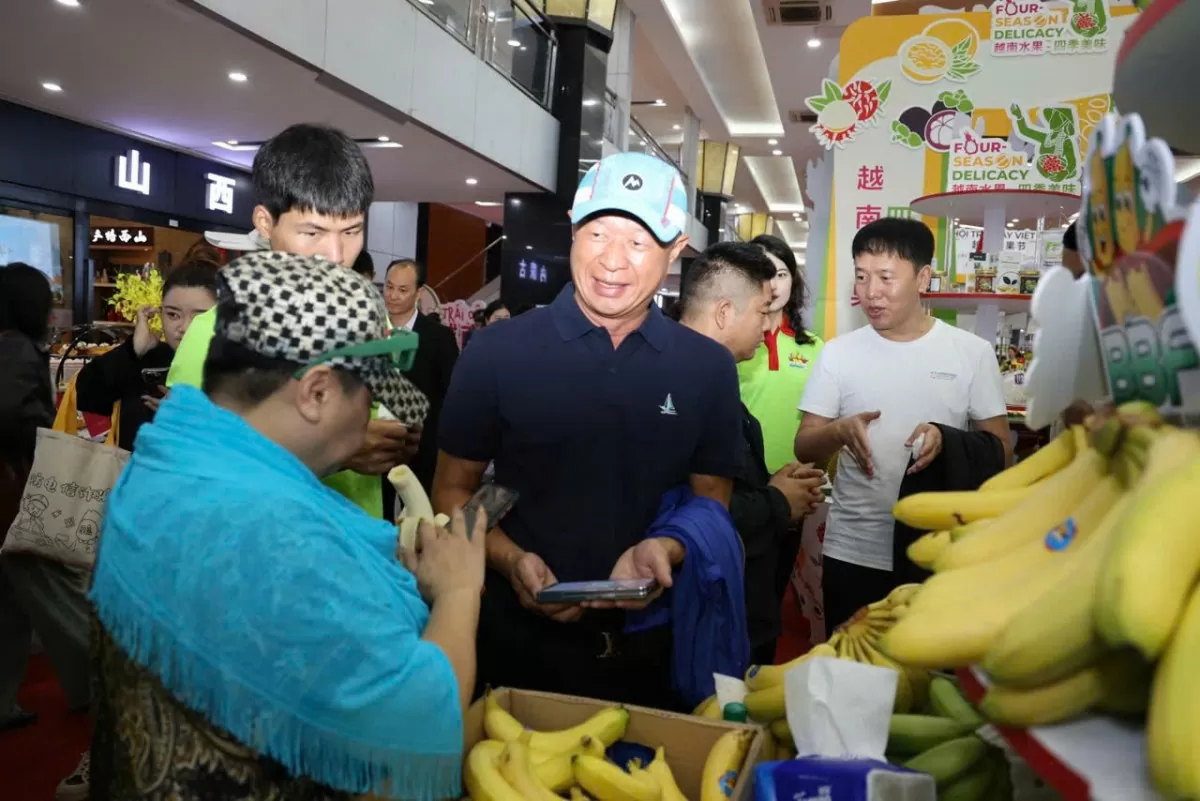Efforts to bring Vietnamese goods directly into China's distribution channels
If Vietnamese goods go directly to distribution channels in other countries without going through intermediaries, it will help increase value, competitiveness and facilitate brand building.
Economic expert Vu Vinh Phu - former Deputy Director of Hanoi Department of Trade shared with reporters of Cong Thuong Newspaper about this issue.
 |
Economist Vu Vinh Phu |
Sir, what do you think about the role of the Chinese market in Vietnam's total import and export turnover?
China is a large market with 1.4 billion people, large purchasing power, an attractive market not only for Vietnamese goods but also for goods from many other countries. With a large import rate for many of Vietnam's strengths such as textiles, footwear, electronics, agriculture, forestry and fishery products, etc., this is a large market that Vietnam cannot miss.
According to the General Department of Customs, our country's export turnover to the Chinese market in the first 8 months reached 38.28 billion USD, a slight increase of 3.9% over the same period last year (equivalent to an additional turnover of 1.44 billion USD).
On the contrary, in 8 months, the import turnover of goods from China reached 92.5 billion USD, a sharp increase of 34.25% over the same period last year (equivalent to an increase of 23.6 billion USD).
Looking at this export turnover figure, it can be seen that China is a very important trading partner of Vietnam. The import-export turnover between the two countries may soon reach the 200 billion USD mark, accounting for nearly 30% of the total import-export turnover of the whole country.
Besides the positive results, in your opinion, what are the limitations in sustainably increasing two-way trade turnover?
Although it is a large market, China is also increasingly demanding in terms of standards such as growing area codes, packaging codes, export standards, etc. This is something businesses must pay attention to.
 |
The first Vietnam Fruit Festival held in Beijing, China is an important trade promotion event jointly organized by the Ministry of Industry and Trade, the Ministry of Agriculture and Rural Development, with the cooperation of the Vietnamese Embassy in China, the Vietnam Fruit and Vegetable Association and Chinese partners... (Photo: Nguyen Minh) |
Besides, Vietnam currently imports a lot of goods from China. Most of them are raw materials for production, which is not a cause for concern. However, Vietnam also imports a lot of agricultural products and consumer goods from China. Therefore, it is necessary to improve the competitiveness of domestic goods to increase exports to this market, thereby helping to reduce the deficit and move towards a balanced trade balance.
In addition, Vietnam and China currently have many integration frameworks such as the ASEAN-China FTA, CPTPP, etc. However, in my opinion, Vietnam's ability to take advantage of them is only about 30-40%. Ministries and sectors have spent a lot of time and effort to open up these integration frameworks, so businesses need to pay attention to taking better advantage of them to increase export turnover to China.
Notably, China is currently making good use of cross-border e-commerce to bring goods to Vietnam. However, in the opposite direction, Vietnam has not yet made good use of this advantage. Therefore, it is necessary to make efforts to take advantage of this advantage, build large warehouses at the border to take advantage of the advantages of border localities to bring goods deep into the Chinese market.
As a large and especially important market for Vietnamese goods, what do you think should be done to ensure sustainable growth in import-export turnover between the two countries?
In recent times, through cooperation frameworks, Vietnam and China have agreed on the view of creating favorable conditions for imported goods into each other's markets. Currently, the import-export turnover between the two countries has reached 180 billion USD and is full of opportunities to soon reach the 200 billion USD mark. To continue to increase two-way trade in a sustainable manner, it is necessary to pay attention to a number of issues:
Firstly, invest in improving the standards and quality of goods to be competitive with products from other countries in the Chinese market.
Second, improve transportation capacity, reduce logistics costs to enhance competitiveness for businesses. This requires not only the Ministry of Industry and Trade but also the Ministry of Transport and localities sharing the border to participate in improving the traffic system, investing in building warehouses near the border...
Third, promote cross-border e-commerce to take advantage of bringing Vietnamese goods deep into the Chinese market.
Fourth, currently, Vietnamese goods still go through intermediaries and hubs before reaching the distribution system of your country. Therefore, businesses need to strengthen their work and trade connections with your distribution systems, markets, and supermarkets to bring goods directly into these distribution channels, thereby reducing costs, improving competitiveness, and making it easier to build a brand.
Fifth, China is a large market and each province and city in China is a potential “land”. Therefore, it is necessary to increase in-depth trade promotion activities in Chinese localities to diversify opportunities for Vietnamese goods.
Sixth, promote the role of trade agencies, representative offices, and Vietnamese trade counselors in China to enhance market information, helping businesses quickly dominate the local market.
Thank you!
Thuy Linh


